
Fall Burndown: Your Options for Soybeans
Fall Burndown: Your Options for Soybeans
Postharvest herbicide applications in the fall can help to provide a weed-free seedbed prior to planting in the spring, especially in no-till fields (Figure 1). Herbicides applied in the fall should target fall-emerging winter annual species, biennials and perennials. Fields with heavy weed populations are the best candidates for a fall application.
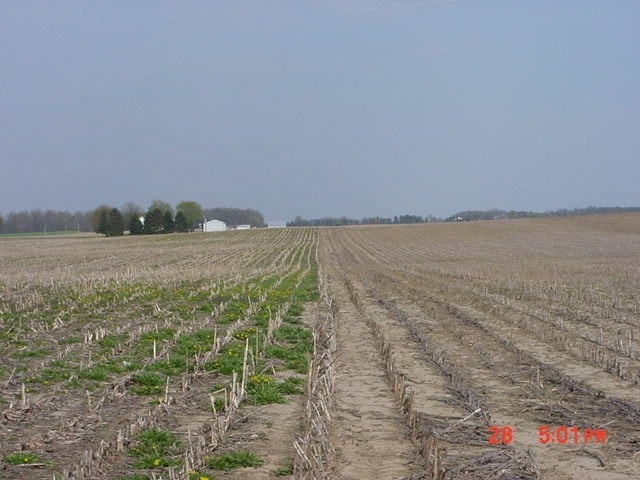
Targeted Weeds for Fall Burndown
Fields that are already heavily infested with winter annual weeds like henbit, purple deadnettle, chickweed or mustards are good candidates for a fall burndown herbicide application (Figure 2).
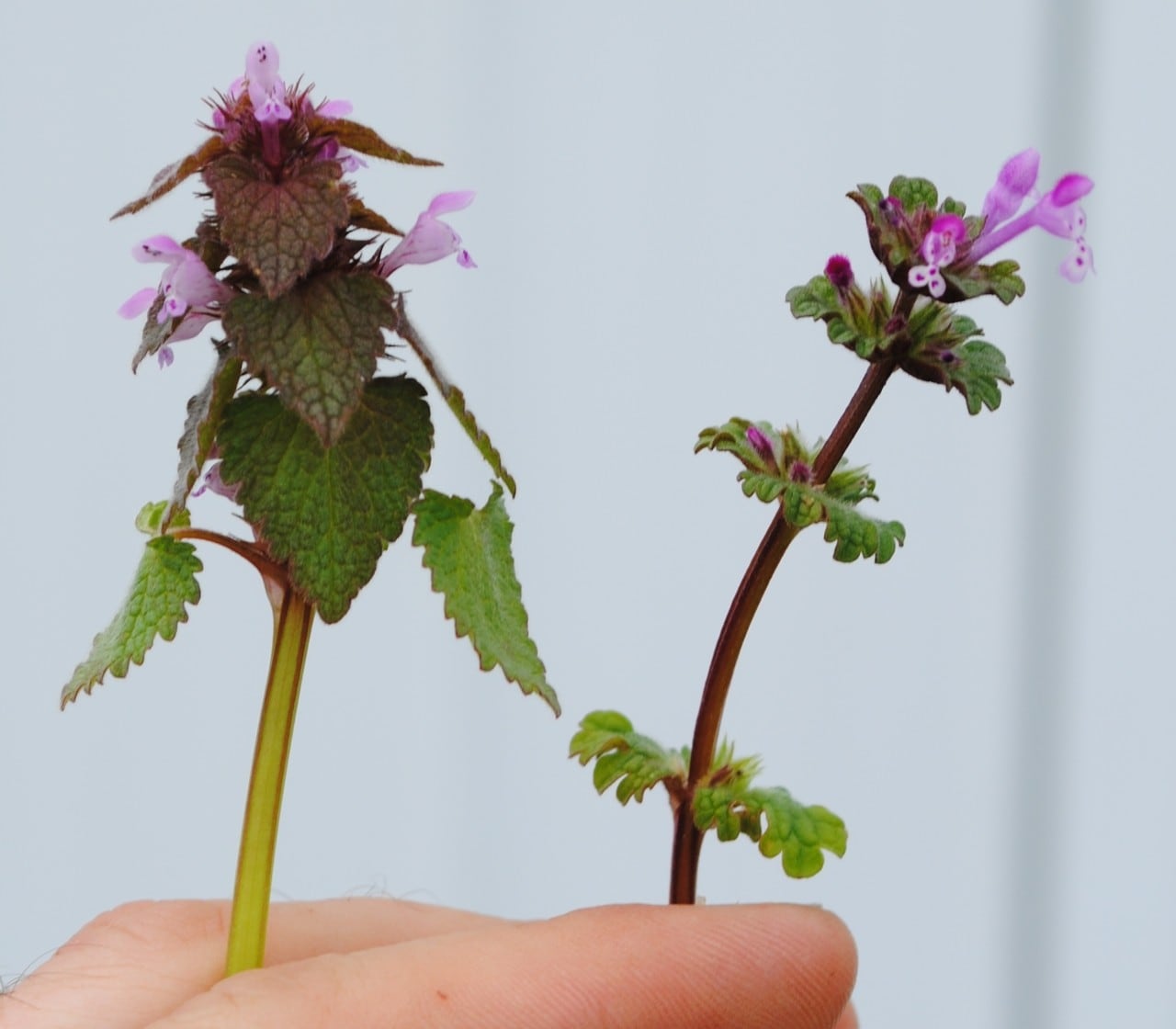
Due to their postharvest emergence, annual winter weeds increase vegetation in winter months and complete their life cycle during the spring and early summer. Controlling winter annual weeds is often more difficult in spring than in fall because of weed size and weather conditions. If allowed to keep growing in the spring, winter annual weeds can even form a thick mat on the soil surface, thus blocking sunlight from warming the soil and interfering with tillage and crop establishment. Fall herbicide treatments are often more effective on these weeds because they may not be growing as actively in the spring while having almost completed their life cycle.
Common Annual Weed Species
Marestail (horseweed) is a winter or summer annual weed that can germinate in the fall as well as in the spring (Figure 3).
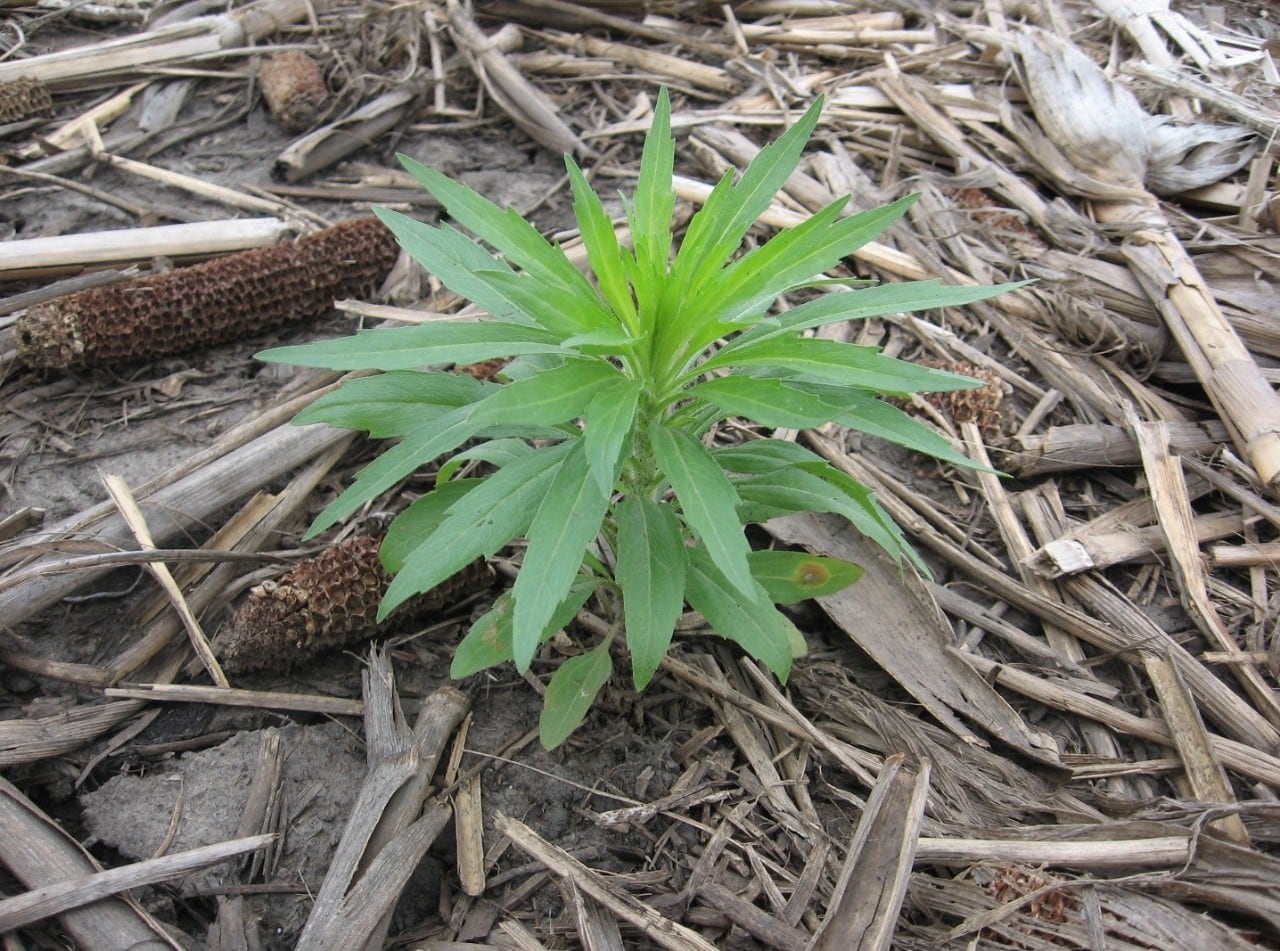
Through the fall and winter, late summer and fall-germinating plants remain in the low-growing rosette stage before bolting (or stem elongation) occurs in the spring. Marestail is more easily managed with herbicides when weeds are small and in the rosette stage. Fall-emerging plants often bolt earlier in the spring, which can make spring burndown herbicide application more difficult to control.
Dandelion is a perennial weed that spreads by seeds, which can germinate on the soil surface at low temperatures. Seedlings of dandelions quickly develop a crown and taproot. Mature dandelion plants can live for many years and become a serious problem in minimum or no-till fields (Figure 4).
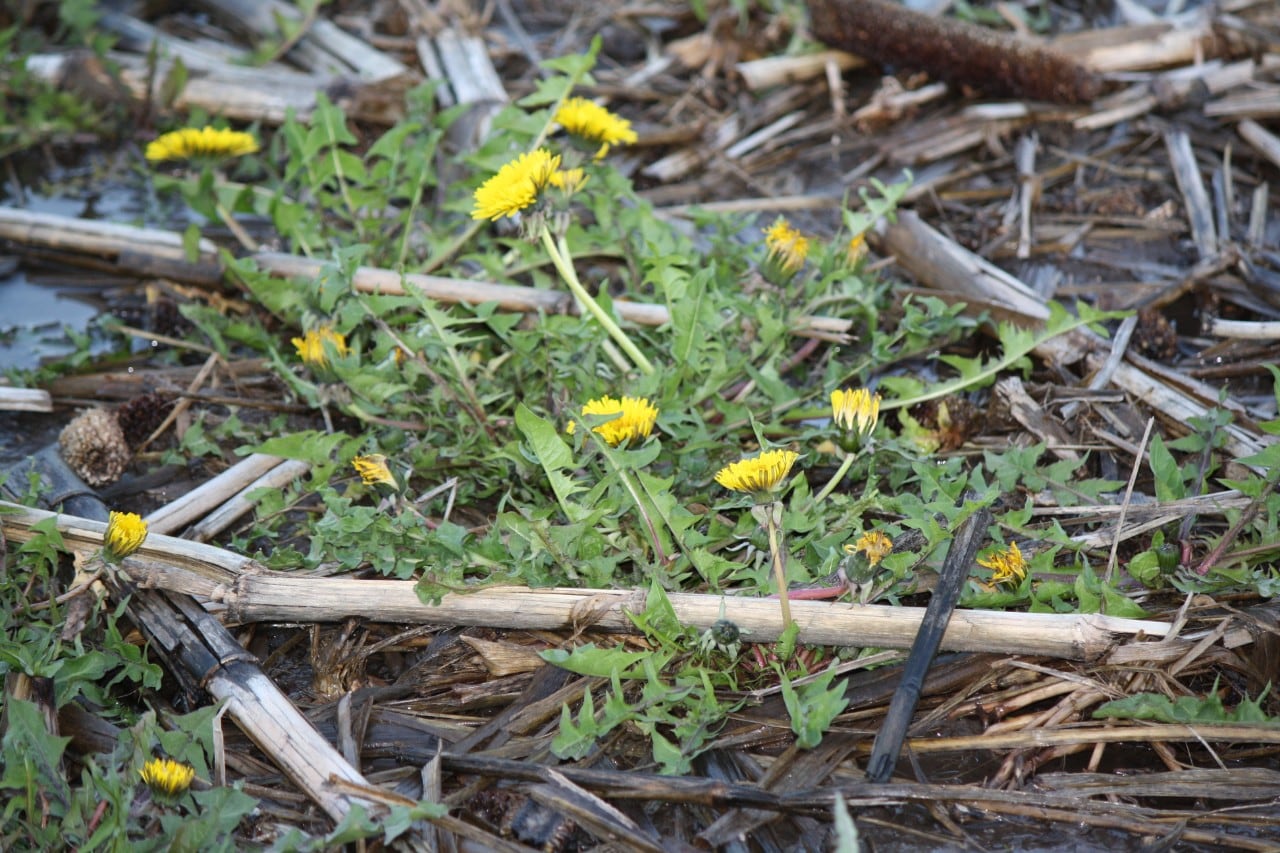
Dandelions grow late into the fall — they are hardy plants that can tolerate frost. Palmer amaranth and common waterhemp are summer annual weeds but can still emerge after harvest and produce seed in as little as five to six weeks.
Common waterhemp is a summer annual that should also be managed after harvest to prevent seed production. Other weeds that can be targeted in the fall include dandelion, common waterhemp and Palmer amaranth.
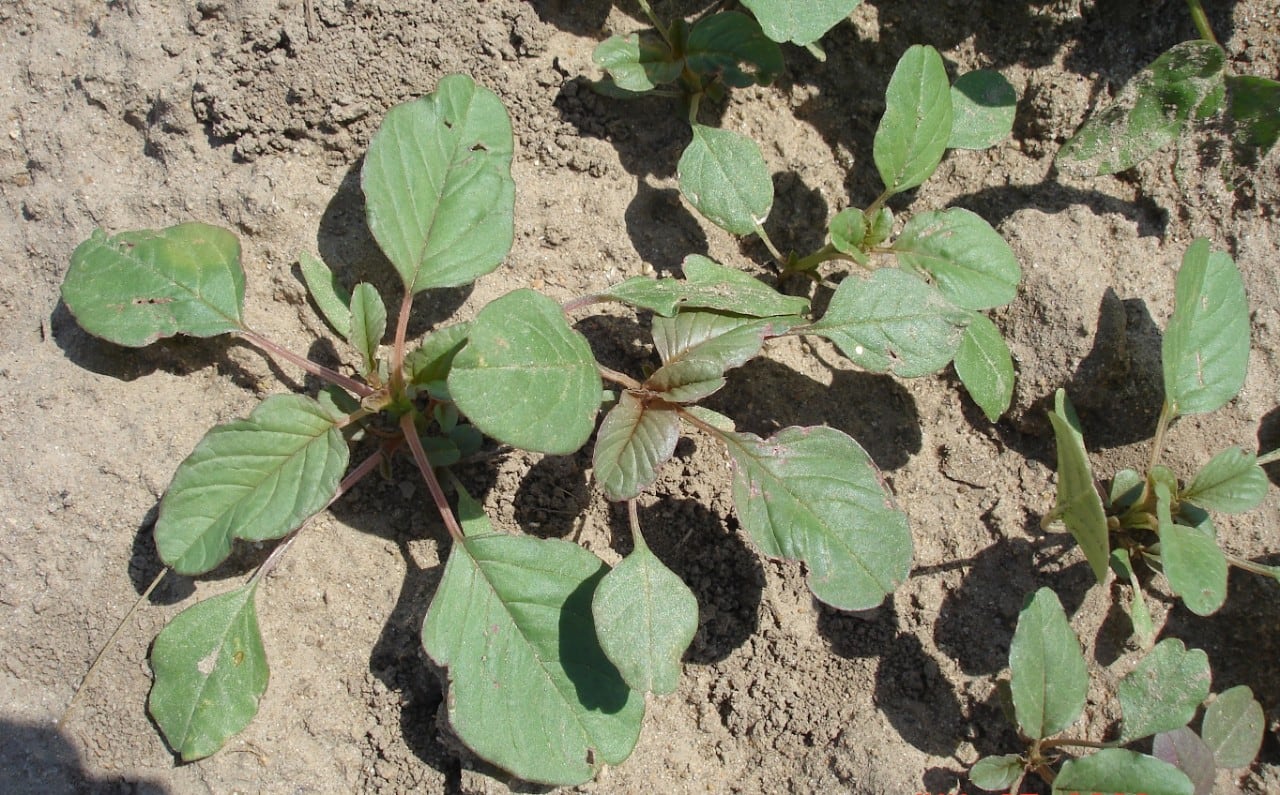
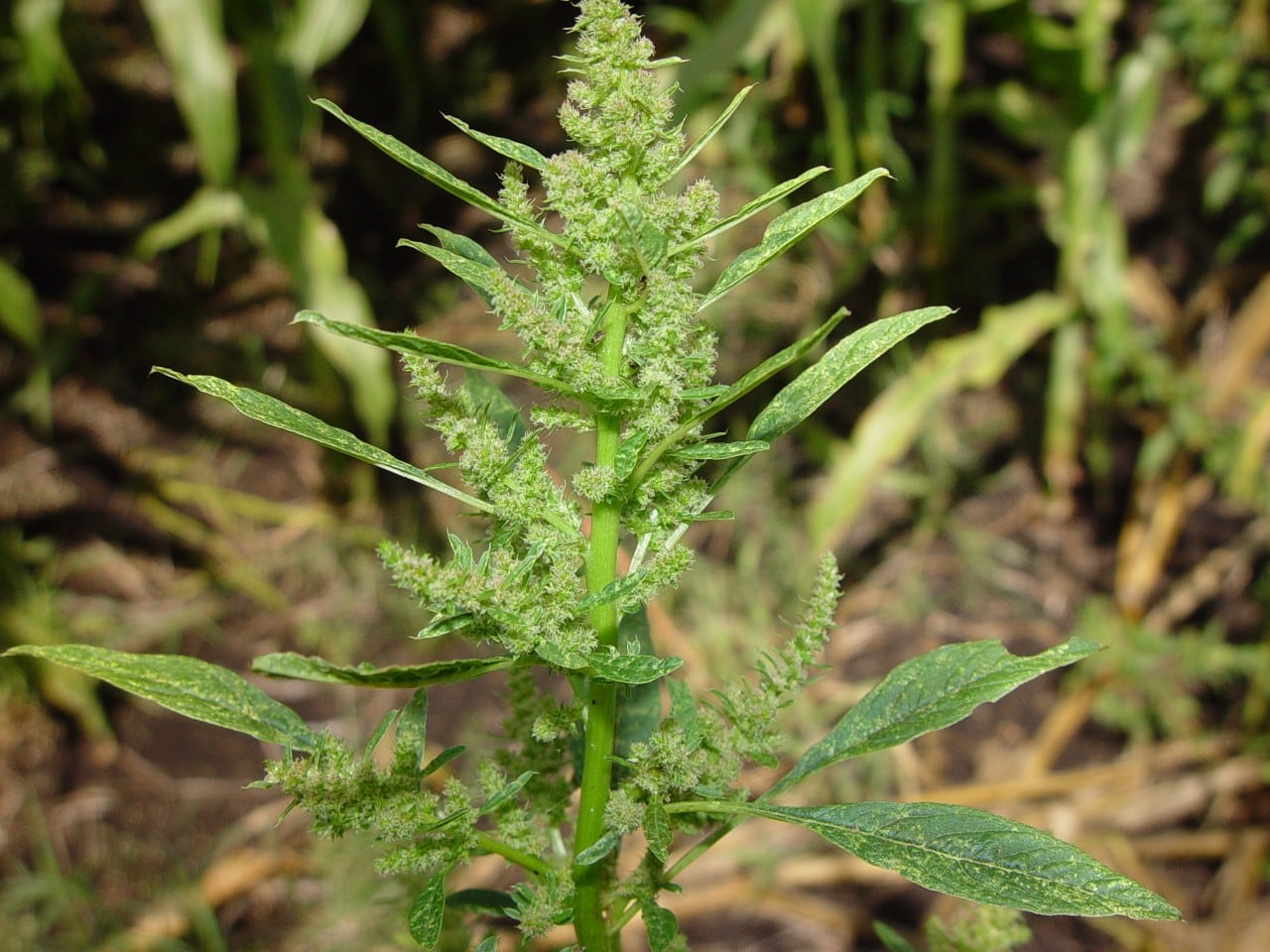
Top Benefits of Fall Burndown Applications
- Helps to spread out the workload in the spring.
- Provides more favorable conditions for control of winter annual weeds than early spring because of smaller weed size and more suitable days for herbicide applications.
- Provides better control of marestail than spring burndown.
- Helps to improve soil temperature and soil moisture at planting.
- Reduces the potential for soybean cyst nematodes (SCN) by removing weed hosts like henbit and purple deadnettle where SCN can overwinter.
Effective Herbicide Recommendations
Roundup® brand agricultural herbicides are effective on most grass and broadleaf weeds. However, the addition of dicamba or 2,4-D is recommended for broad-spectrum burndown of weeds.
In some cases, marestail or Palmer amaranth populations may be resistant to glyphosate, possibly requiring the addition of dicamba for control. Including dicamba with glyphosate can help increase the consistency of marestail and Palmer amaranth control, even in fields without glyphosate resistance.
Residual herbicide applications in the fall can help with control of later-germinating winter annual weeds that might not be present at the time of the initial application. An effective fall application should result in a field that is mostly free of weeds at least until temperatures begin to warm up in the spring. The earlier the fall application is made, the more benefit a soil residual herbicide can provide since the emergence of winter annual weeds is often not complete. Applications later in the fall often diminishes the necessity of a soil residual herbicide since most of the winter annual weeds have emerged. However, in some years — depending on weather conditions — there can be significant germination of winter annual weeds throughout the winter months.
Autumn™ Super herbicide provides burndown of emerged weeds with residual activity to keep winter annuals from emerging. Other herbicides that provide residual activity on winter annuals include Canopy® herbicide, Canopy XL® herbicide, Authority® XL herbicide, Authority® First herbicide and Valor® XLT herbicide. These herbicides can also be tank-mixed with glyphosate, dicamba and 2,4-D for improved control of emerged weeds.
The application of residual herbicides in the fall does not replace the need for residual herbicide applications in the spring. Residual herbicides applied in the fall generally provide little if any control of summer annual weeds the following year, especially in soybeans. Fall herbicide applications should be part of a comprehensive weed management program, which could include spring burndown and at-planting and in-crop herbicide applications. Programs should be designed to minimize the risk of weed resistance and weed species shifts.
Sources
Anderson, M., Hartzler, B., and Jha, P. 2019. Fall burndown treatments for winter annual weeds. Iowa State University, Integrated Crop Management. https://crops.extension.iastate.edu.
Hager, A. 2018. Fall-applied herbicides: Which weed species should be the target? University of Illinois at Urbana-Champaign, Department of Agricultural and Consumer Economics. Farmdoc daily (8): 157. https://farmdocdaily.illinois.edu.
Bradley, K. 2013. Considering fall herbicide applications: It’s not just about the weeds. University of Missouri, Integrated Pest Management. https://ipm.missouri.edu.
Web sources verified 10/05/2021. 8001_S2